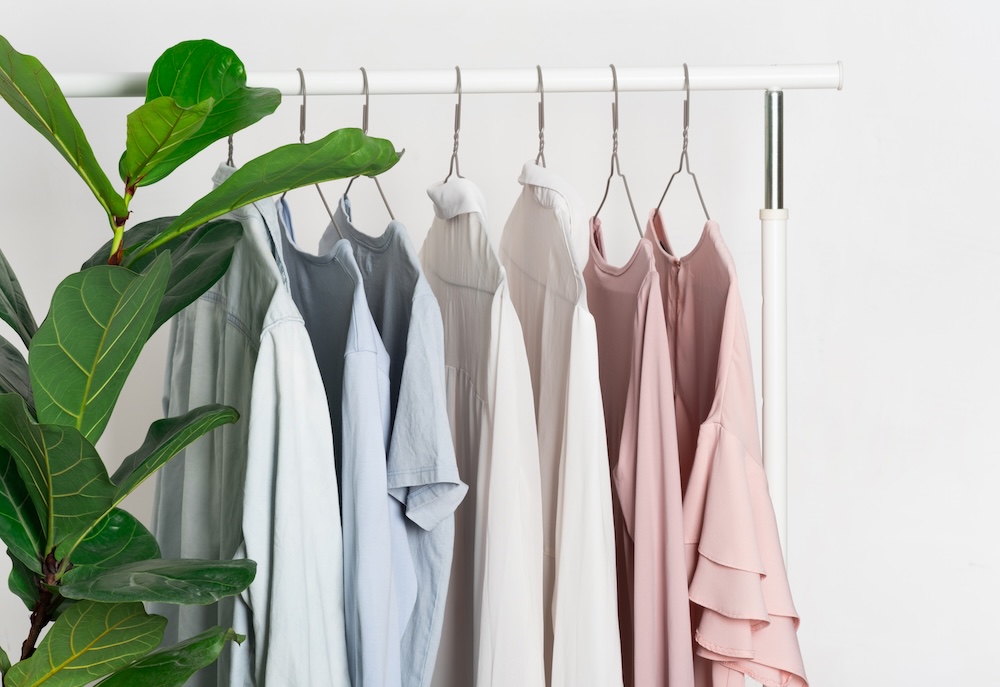Fashion is woven into daily life, but fast fashion’s environmental toll has left many consumers looking for alternatives. From excessive water use to overflowing landfills, the impact is staggering. The minimalist slow fashion movement offers a way forward: one that emphasizes quality, timelessness, and mindful choices over mass consumption.
Minimalist slow fashion isn’t about depriving yourself — it’s about curating a wardrobe you love, built on ethics, sustainability, and pieces that last.
What Is Minimalist Slow Fashion?
Minimalist slow fashion prioritizes sustainable and ethical fashion practices, focusing on quality over quantity and timeless over trendy. It responds to the harm caused by fast fashion by encouraging fewer purchases, better care, and styles designed to endure.
By making conscious choices, we not only extend the life of our clothes but also reduce waste, cut carbon emissions, and support fair labor. Each decision ripples outward, shaping an industry that respects both people and planet.
Rule #1: Prioritize Quality Over Quantity
Invest in clothing that lasts. Instead of filling your closet with cheap, short-lived items, choose durable, well-constructed pieces. They may cost more upfront but save money long term by reducing replacements.
Look for:
- Natural materials like organic cotton, hemp, or wool.
- Strong stitching and neat finishing.
- Details such as reinforced hems and buttons that signal quality.
Avoid synthetics like polyester and nylon, which are fossil-fuel based and take centuries to decompose.
Rule #2: Embrace Versatility and Layering
A minimalist wardrobe thrives on pieces that do more with less. Instead of buying separate outfits for every occasion, build a collection of versatile basics that mix and match.
Layering is key: a t-shirt can stand alone in summer or slide under a cardigan in cooler months. Neutral tones like black, white, navy, and gray pair effortlessly, while accessories can refresh a look without adding clutter.
Rule #3: Choose Timeless Styles
Trends fade quickly, but classics endure. Prioritize styles with simple silhouettes, neutral colors, and patterns like stripes or subtle checks.
Ask yourself: Will I wear this five years from now? If the answer is yes, it’s a good candidate for a slow fashion wardrobe. Timeless clothing not only reduces waste but also builds personal style that lasts longer than any trend cycle.
Rule #4: Invest in Sustainable and Ethical Fashion
Fast fashion often hides exploitative labor and damaging production. In contrast, sustainable brands use eco-friendly materials, fair wages, and safer working conditions.
Look for certifications:
- GOTS (Global Organic Textile Standard) for organic fabrics.
- Fair Trade for labor practices.
- B Corp certification for overall social and environmental responsibility.
Supporting ethical fashion brands helps shift the industry toward accountability and transparency.
Rule #5: Limit Your Consumption
Minimalist slow fashion isn’t about constant shopping — it’s about buying less, but better. Before buying something new, ask:
- Do I really need this item?
- Can I style it multiple ways?
- Does it align with my values and wardrobe?
Instead of purchasing frequently, repair what you own, swap with friends, or shop secondhand. Each decision reduces demand for resource-heavy fast fashion.
Rule #6: Care for Your Clothes Properly
Clothing lasts longer when treated well. Extend its lifespan through mindful care:
- Wash in cold water with mild detergent.
- Air dry instead of tumble drying to save energy.
- Store neatly to prevent stretching or wrinkling.
- Repair small damages promptly — a button sewn or a seam restitched keeps garments useful for years.
When clothing truly reaches the end of its life, recycle textiles or repurpose them into cleaning rags or craft materials rather than sending them to landfill.
Final Thoughts
Minimalist slow fashion is more than a wardrobe choice — it’s a lifestyle shift. By prioritizing quality, embracing versatility, and caring for our clothes, we reduce waste, save money, and support sustainable industry practices.
Every conscious decision — whether buying less, repairing a garment, or choosing timeless styles — creates ripples that challenge fast fashion’s cycle of overproduction and waste. Together, these small actions build a more sustainable, ethical fashion future.









Reader Interactions